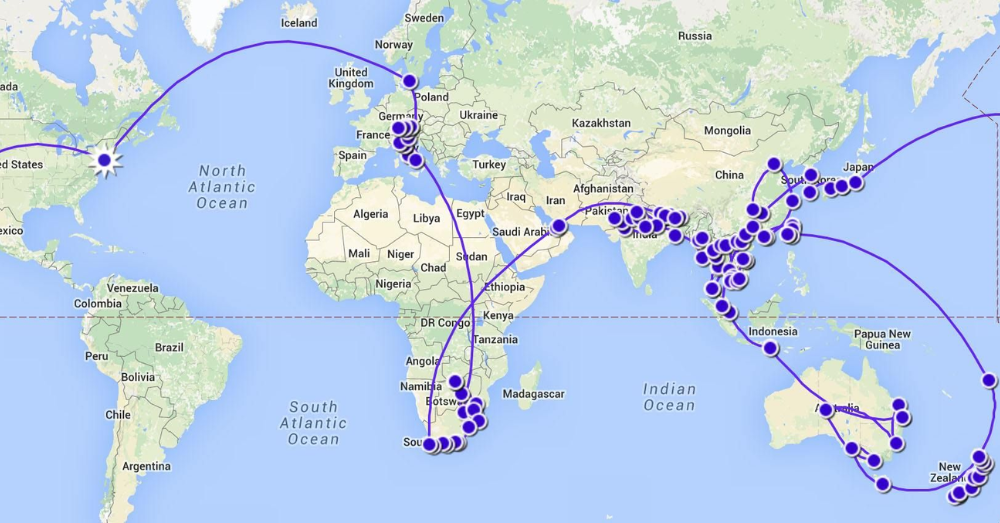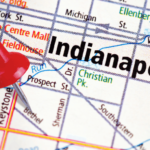
Picture this: your friend calls from a gas station outside Prague, practically in tears. His dream European road trip turned into a financial nightmare after just two weeks. Between fuel costs, tolls, and poor vehicle choice, he’d already blown through half his three-month budget. This scenario plays out constantly for unprepared travelers. With the right approach, you can road trip across entire continents without emptying your bank account.
- Vehicle choice alone can save you $300+ on a single 2,500-mile journey
- Europe costs $100-200 daily, while Southeast Asia runs just $25-40 for smart travelers
- Strategic timing and route planning cut expenses by 30-50% compared to wing-it approaches
Pick the Right Ride (It Actually Matters)
Here’s what nobody tells you about long-distance driving: your car choice makes or breaks everything. Too many travelers learn this lesson the hard way during their first cross-country trip in a gas-guzzling SUV.
Fuel-efficient cars like the Toyota Prius or Honda Civic Hybrid aren’t just good for the environment—they’re good for your wallet. The numbers don’t lie. A Prius getting 54 MPG uses about 46 gallons crossing America, while that SUV burns through 114 gallons. At $4 per gallon, you’re looking at $272 difference. That’s four nights in decent hotels.
But maybe you need space for gear. The Honda CR-V Hybrid splits the difference beautifully. You get room for camping equipment and luggage without watching your fuel gauge drop every hour. The combination of space and efficiency makes long drives actually enjoyable.
For European adventures, smaller is smarter. Those narrow village streets in Tuscany weren’t built for American-sized vehicles. Plus, parking costs less, and you’ll actually fit in regular parking spaces.
Timing Is Everything (Seriously)
Travel timing affects your budget more than most people realize. Smart travelers can save $200 on fuel alone by adjusting European routes by just two weeks. Gas prices in Europe change with seasons, and some countries cost way less than others.
Take this winning strategy: start in Luxembourg (cheap gas), then hit Montenegro and North Macedonia before the expensive stuff in France and Italy. Just by planning gas stops strategically, you’ll spend 20% less on fuel. It sounds obsessive, but those savings add up fast.
Southeast Asia works differently. Prices stay pretty stable year-round, but road conditions change dramatically. Stick to the dry season (May through September) and you’ll avoid getting stuck in mud that costs serious money to fix.
South America? That’s where timing gets tricky. Bolivia stays cheap regardless, but Brazil will drain your funds if you hit it during peak season. Plan accordingly.
Stop Thinking Like a Tourist
The biggest money-saver? Stop doing everything the tourist way. Car sharing exists in Europe through platforms like BlaBlaCar. Split fuel costs with locals heading your direction. You’ll save money and meet actual people instead of just other tourists.
Smart travelers use what travel experts call the “relay method.” Instead of driving one car across multiple countries, fly to regions and rent locally. Sounds counterintuitive, but shipping a car overseas costs thousands. Flying to Bangkok and renting there costs maybe $600 total. The math works.
European car leasing programs remain surprisingly underutilized. You get a brand-new, efficient car with insurance and roadside assistance for extended trips. Often cheaper than traditional rentals for stays over three weeks.
Route Planning That Actually Saves Money
Your phone can save you hundreds if you use it right. Download fuel calculator apps that factor in real-time gas prices. The Roadtrip app has helped countless travelers save money on every single trip.
Avoid tolls when possible, but be smart about it. Italian tolls can cost $150+ for a cross-country drive. Alternative routes add maybe three hours, but keep that money in your pocket. Sometimes the scenic route actually costs less.
Mountain roads look gorgeous on Instagram but murder your fuel economy. Those winding Alpine passes can double your gas consumption compared to boring highways. Plan accordingly based on your priorities.
Real Numbers from Real Trips
Here are the actual costs from documented trips across different regions:
Europe (2 people, mid-range comfort): $100-200 daily, including everything. Stay in Eastern Europe longer—Slovenia and Hungary cost half what France does. Western Europe hits your wallet hard, but Eastern Europe offers incredible value.
Southeast Asia: This region spoils you. $25-40 daily for two people if you’re smart about it. Mix car rentals with local transport. Rent a scooter for city exploration,a car for longer hauls between countries.
South America: Budget $50-100 daily for basic comfort. Argentina and Chile cost more, and Bolivia and Peru cost less. Infrastructure varies wildly, so factor in potential repair costs.
The Little Things That Add Up
Check your tire pressure religiously. Seriously. Under-inflated tires can cost you 5% fuel efficiency. On a 10,000-mile trip, that’s real money.
Pack light or pay the price. Every 100 pounds of extra weight costs you 2% efficiency. Those “just in case” items aren’t worth the fuel penalty.
Gas station choice matters. In Europe, hypermarket stations (Carrefour, Tesco) beat branded stations by 5-10%. In America, apps like GasBuddy show the cheapest options along your route.
Where to Sleep Without Going Broke
House-sitting has transformed travel for budget-conscious adventurers. Free accommodation worldwide in exchange for watching someone’s home and pets. TrustedHousesitters connects travelers with opportunities everywhere.
Mix your accommodation strategy. Splurge on nice hotels every few days to recharge, then use budget options or camping in between. Your sanity matters on long trips.
European hotel prices follow predictable patterns. Book shoulder seasons (late fall, early spring) for 40% savings compared to summer peaks. Southeast Asia stays fairly consistent year-round.
Technology That Actually Helps
Google Flights becomes your best friend for hybrid travel strategies. Find cheap positioning flights to get yourself to regions where driving makes financial sense. Sometimes flying somewhere else to start driving saves serious money.
Currency apps matter more than you think. What looks expensive in local currency might actually be cheap at current exchange rates. Travelers often get pleasantly surprised by fuel costs in countries they expected to be expensive.
Making It All Work
Continental road trips aren’t just for rich people or gap-year students. They’re for anyone willing to plan smart and stay flexible. The key? Stop thinking you need to do everything the expensive way.
Start with shorter trips to test your systems. Try a one-week regional adventure before committing to months abroad. Learn what works for your travel style and budget.
Remember that fuel costs are just part of the equation. Smart transportation choices create room in your budget for better food, cooler activities, and unexpected discoveries. You’ll end up having better experiences because you’re not stressed about money.
The best part about continental road trips? The freedom to change plans when you discover something amazing. That flexibility only works when your transportation costs aren’t bleeding you dry.
Don’t let budget fears stop you from exploring. With decent planning and smart choices, those continent-hopping adventures are totally doable. Pack your sense of adventure and start small. Before you know it, you’ll be the one giving advice to confused travelers at gas stations in foreign countries.
This post may contain affiliate links, meaning we may earn a commission if you make a purchase. There is no extra cost to you. We only promote products we believe in.










